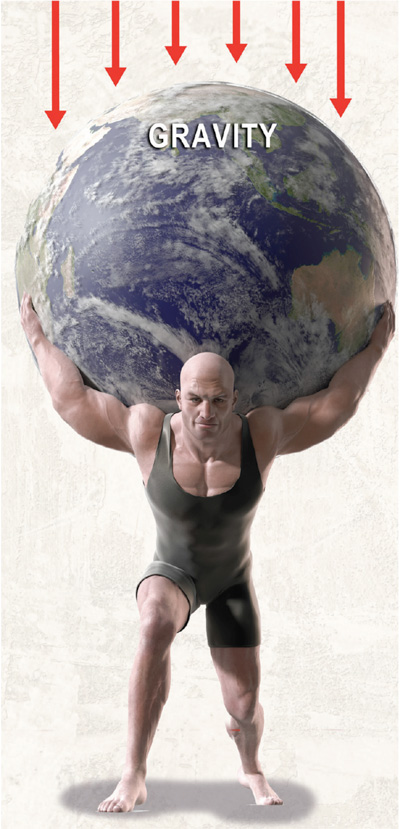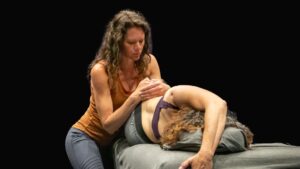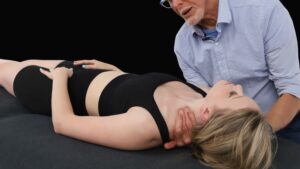Summary: Oftentimes seen as a structurally subtle body segment, the neck is burdened with the highly difficult task of supporting the human head. Because of the tension, trauma, and poor posture inherent in the workplace today, it is no surprise that head-on-neck and neck-on-thorax imbalances serve as some of the most frequent pain generators driving people into our bodywork practices.
Many injuries in America today come from on-the-job muscle/joint strain and overuse syndromes. Working in a technologically driven society has caused an explosive and expensive increase in work-related costs, with injuries occurring to categories of workers previously considered low risk for anything more serious than the occasional paper-cut.
This two-part series is excerpted from the new textbook written by Erik Dalton, entitled Advanced Myoskeletal Techniques. This segment studies the causes, conditions, and corrections associated with one of the most painful of all postural faults: forward-head postures.

The battle against gravity
Muscles are designed to glide independently neighboring myofascial tissues as the central nervous system orchestrates a complex assortment of specified movements. When observing professional gymnasts at work, one immediately recognizes the amazing quality, variety and complexity of their coordinated movement patterns. Conversely, the elderly foot-shuffler appears to have body areas frozen in time. Unfortunately, years of tension, trauma and poor posture—combined with gravitational exposure—force the human body to sacrifice complexity of movement for stability.
Today, more than ever, people are disposed to sit for hours in isometrically contracted postures without adequate physical activity. When muscles contract, fuel is burned and waste products accumulate. In time, these chemical irritants modify the muscle resting length, causing enveloping fascial bags to lose their natural suppleness. Prolonged sitting leads to slumping, as people spend innumerable hours tied to work terminals, home computers, school desks and television sets. As the heavy head eventually drops forward and down, the scapulae externally rotate and protract, increasing thoracic kyphosis and flattening of lumbar lordosis.
Worn out from battling gravity, intrinsic cervical extensor muscles such as semispinalis, longissimus, the suboccipitals and multifidus become toxic from oxygen deprivation. Extrinsic (phasic) muscles (trapezius, rhomboids, posterior rotator cuff, etc.) prefer burning glucose for fuel but the deep intrinsic support muscles require more oxygen. When tension, trauma, and faulty posture lower the amount of delivered to intrinsic postural muscles, fatigue sets in, causing the gravitational load to shift to the extrinsics.
Extrinsic muscles are dynamic and created to provide quick bursts of energy. Since phasics contain a greater number of fast-twitch fibers, they do not respond well to sustained compressional loading and quickly give out and the energy-depleted intrinsic muscles are once again made to bear the load. This decompensation cycle marks the beginning of a domino effect that structurally manifests as reduced flexibility, loss of range of motion, and an awkward forward-head, slumped-shouldered posture.
The seven deepest myofascial layers traversing the C7-T1 junction are especially vulnerable to sustained isometric contraction from forward-head postures (Figure 1). Over time, the slick lubricating fluid designed to provide smooth gliding of individual fascial sheaths dehydrates, thickens and becomes adhesive. The effect: fascial adhesions, myospasm and muscle contractures. Living in a healthy body with pain-free range of motion requires that every upper quadrant muscle maintain its own independent yet communal contribution during head-and-neck motion. When “sticky” fascial layers bond, specialized (efficient) muscle activity is lost. The semispinalis, splenius, longissimus and trapezius fasciae are frequently guilty of clinging and dragging on neighboring muscles. Myofascial restrictions not only waste invluable energy but also reduce flexibility and range of motion.
An exaggerated example of this condition is often recognized in persons forced to turn their entire trunk to look to the side. This population usually presents with protracted shoulders and forward-drawn heads evolved from decades of slumped sitting, repetitive movement patterns, trauma, and limbic system (emotional) stressors. Names such as fibromyalgia and chronic fatigue syndrome are often used to describe these achy, energy-deficient bodies.
Read more ~ PUBLISHED ARTICLES
Erik Dalton, Ph.D., Certified Advanced Rolfer, started the Freedom From Pain Institute and created Myoskeletal Alignment Techniques to share his passion for massage, Rolfing, and manipulative osteopathy. Go to the Erik Dalton website for information on workshops, conferences, and CE home study courses.









